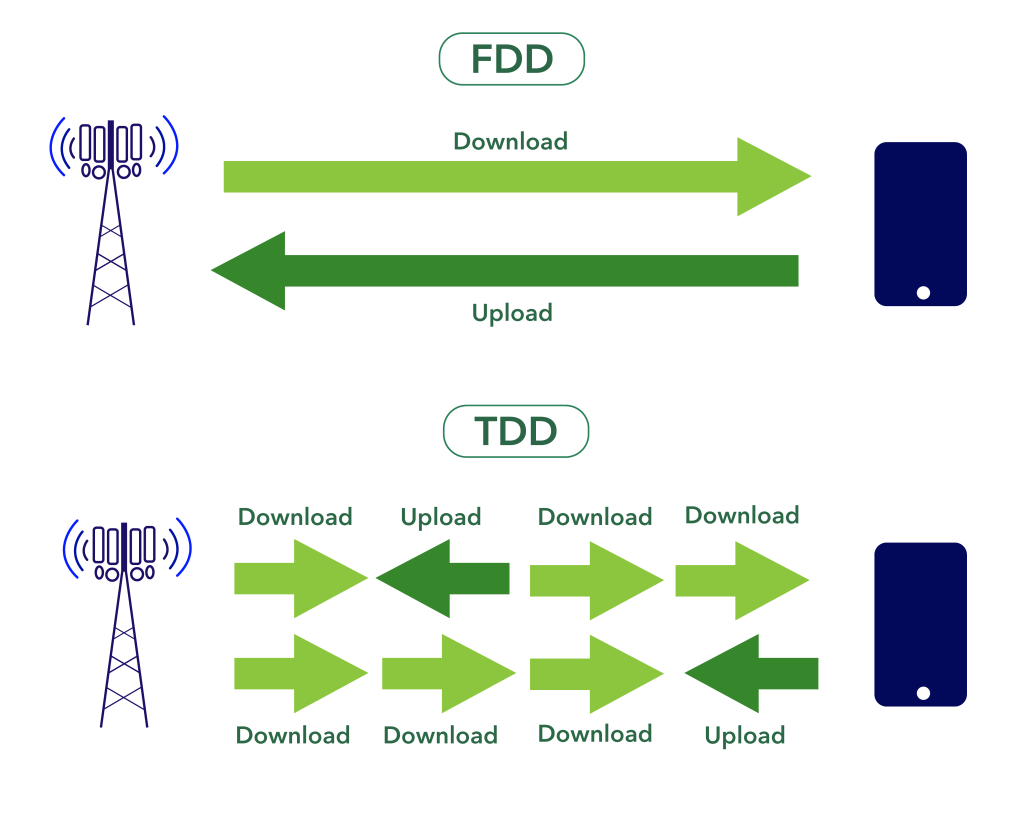The key engineering, legal and policy issues
FDD
FDD, or Frequency Division Duplex, is a technique for sending and receiving communications using paired frequencies, one for uplink and a second for downlink traffic. Typically the two sets of frequencies are of the same size. The guard band separating the paired frequencies is required to prevent interference. Frequencies assigned in this way are also referred to as paired spectrum.

FDD was associated with an older generation of IMTInternational Mobile Telecommunications (I... technology such as 2G and 3G although it is still used today for 4G. National Regulatory Authorities are increasingly assigning new spectrum on a Time Division DuplexTDD, or Time Division Duplex, is a techniq..., or TDD, basis (see separate Glossary entry) rather than as paired FDD bands.
In a data-heavy environment such as 4G or 5G, FDD’s upload channel gets lighter use than the download one which is a less efficient approach than TDD.
An example of FDD frequencies is APT-700, also known as 3GPP3GPP stands for the Third Generation Partn... Band 28, which is an IMT band. The frequencies are 703-748 MHz paired with 758-803 MHz, described as a 2 x 45 MHz band plan. Other well-known sets of FDD frequencies are in the 900 MHz and 1800 MHz bands.
